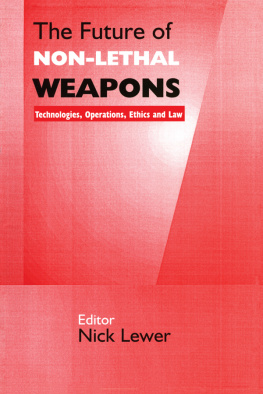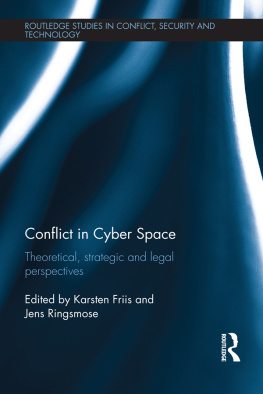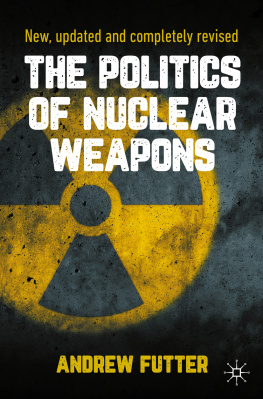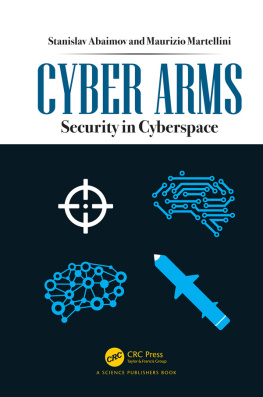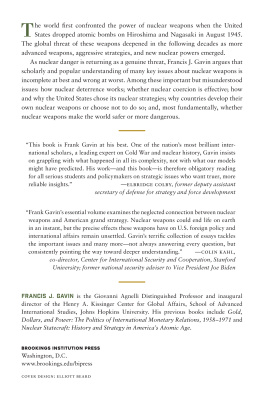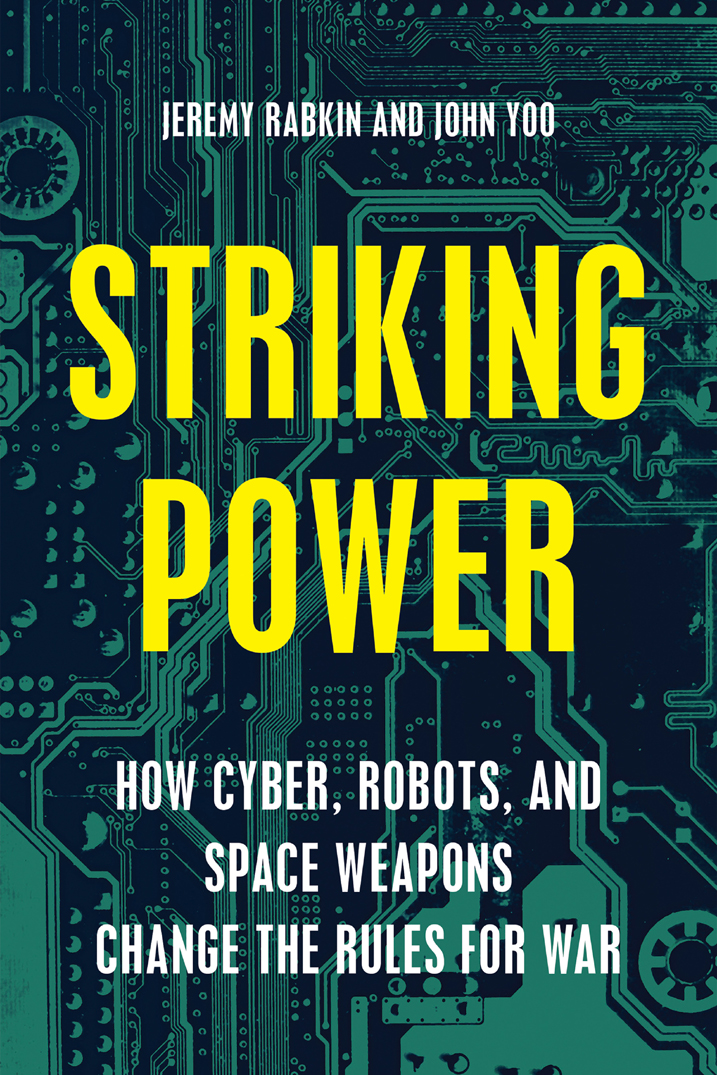

2017 by Jeremy Rabkin and John Yoo
All rights reserved. No part of this publication may be reproduced, stored in a retrieval system, or transmitted, in any form or by any means, electronic, mechanical, photocopying, recording, or otherwise, without the prior written permission of Encounter Books, 900 Broadway, Suite 601, New York, New York, 10003.
First American edition published in 2017 by Encounter Books, an activity of Encounter for Culture and Education, Inc., a nonprofit, tax exempt corporation.
Encounter Books website address: www.encounterbooks.com
The paper used in this publication meets the minimum requirements of ANSI/NISO Z39.481992 (R 1997) (Permanence of Paper).
FIRST AMERICAN EDITION
LIBRARY OF CONGRESS CATALOGING-IN-PUBLICATION DATA IS AVAILABLE
Names: Rabkin, Jeremy A., author. | Yoo, John, author.
Title: Striking power: how cyber, robots, and space weapons change the rules for war / by Jeremy Rabkin and John Yoo.
Description: New York: Encounter Books, 2017. | Includes bibliographical references and index. | Description based on print version record and CIP data provided by publisher; resource not viewed.
Identifiers: LCCN 2017006243 (print) | LCCN 2017012162 (ebook) | ISBN 9781594038884 (Ebook)
Subjects: LCSH: War (International law) | Military weapons (International law) | Technological innovationsLaw and legislation.
Classification: LCC KZ6385 (ebook) | LCC KZ6385 .R336 2017 (print) | DDC 341.6/3dc23
LC record available at https://lccn.loc.gov/2017006243
Interior page design and composition: BooksByBruce.com
Table of Contents
Guide
Contents
In his 2017 inaugural address, President Donald Trump protested that for decades the American people had subsidized the armies of other countries while allowing for the very sad depletion of our military... spent trillions of dollars overseas while Americas infrastructure has fallen into disrepair and decay.
Despite such rhetoric, the administration did not pursue a foreign policy of isolationism or even non-interventionism. In the Middle East, the United States has not only continued fighting foes from its recent wars but gone beyond them. In April 2017, the Trump administration set aside the passivity of its predecessor and launched 59 Tomahawk cruise missiles against a Syrian air base in response to the Assad regimes use of chemical weapons. It expanded the American deployment of ground troops in the Syrian civil war, provided arms to Kurdish militias, and lent air and tactical support to Iraqi forces fighting the Islamic State terrorist group. U.S. troops continued to fight in Afghanistan against a resurgent Taliban, even going so far as to use a massive ordinance bomb against insurgent tunnels. Promising to bomb the hell out of ISIS during his campaign, Trump has authorized a significant increase in drone strikes and special operations by both the CIA and the U.S. armed forces.
In Asia, the Trump administration did not send U.S. forces into direct combat, but it resorted to the threat of force to support its foreign policy. To pressure the North Korean regime to halt its nuclear weapons program, Trump dispatched the USS Vinson aircraft carrier strike group and a nuclear submarine to the area. There is a chance that we could end up having a major, major conflict with North Korea, he said. Absolutely. To enforce such demands would require more frequent freedom of navigation patrols and could even call for naval blockades.
For all that, President Trump shows little sign of reversing the Obama administrations caution on risking American lives. He continues to criticize the U.S. interventions in Iraq and Afghanistan as costlyby which he seems to mean costly in American lives but also in budget allocations. The Trump administration faces a quandary. Restoring a muscular American foreign policy will demand a higher rate of operations and deployments, increasing costs and risking greater casualties. Though the administration has proposed increases in military spending, it remains cautious about costly foreign commitments.
Technology can help resolve this looming impasse. Robotics, the Internet, and space-based communications have increased productivity across the economy. These same advances may have a comparably transformative impact on military affairs. Unmanned aerial vehicles (UAVs) allow pilots to strike targets more precisely at reduced costs, with less harm to bystanders and less threat to themselves. Cyber weapons permit nations to impose disruptions on an adversary in more precisely targeted attacks and without physical destruction. Space-based networks enable militaries to locate their forces exactly, lead their troops more effectively, and target their enemies more precisely.
These new advances are turning military development away from the twentieth centurys reliance on draft armies equipped with simple, yet lethal, mass-produced weapons. As nations use force that becomes more precise and discrete, they can change the rules developed in the era of mass armies and attrition warfare. The laws of war need not fuss over the line between targetable military and immune civilian assets when UAVs can deliver precision-guided munitions on particular targets.
Reluctance to use force has led western nations to rely on economic sanctions, which punish entire populations. Drones and cyber attacks could provide a more effective alternative by inflicting harm on the target states economy, but in a more precise manner. Such an approach may avoid the unintended effects of sanctions and operate much more quickly and reliably, and leave adversaries less time to adapt. To make the most of those new capacities, we should rethink current legal formulas purporting to regulate when military force is lawful against what targets it is used.
New weapons technologies could help the United States and its allies protect international stability. WMD proliferation, international terrorism, human rights catastrophes, and rising regional powers are threatening the liberal post-WWII international order constructed by the U.S. and its allies. Nations will be discouraged from confronting these problems with conventional force. But if new technology reduces the costs of war, while improving its effectiveness, nations may turn to force more often to promote desirable ends. International stability remains a global public good, in that peace benefits all nations regardless of who pays for it. This gives nations a strong incentive to free-ride off the efforts of others to maintain international peace and security. If using force becomes less expensive and more effective, nations may turn to force more readily when the times require it. New weapons may be particularly helpful in situations where a large-scale military response might be excessive, but mere words are insufficient.
New weapons technologies may produce the welcome benefit of limiting the destructiveness of conflict. While the United States, among others, is rapidly developing new means of fighting, these innovations may limit war. Robotics can reduce harm to combatants and civilians by making attacks more precise and deadly. Cyber can more effectively target enemy military and civilian resources without risking direct injury to human beings or the destruction of physical structures. Space satellites will provide the sensors and communications that make possible the rapid, real-time marriage of intelligence and force, and future orbital weapons may create a viable defense to nuclear missiles.


